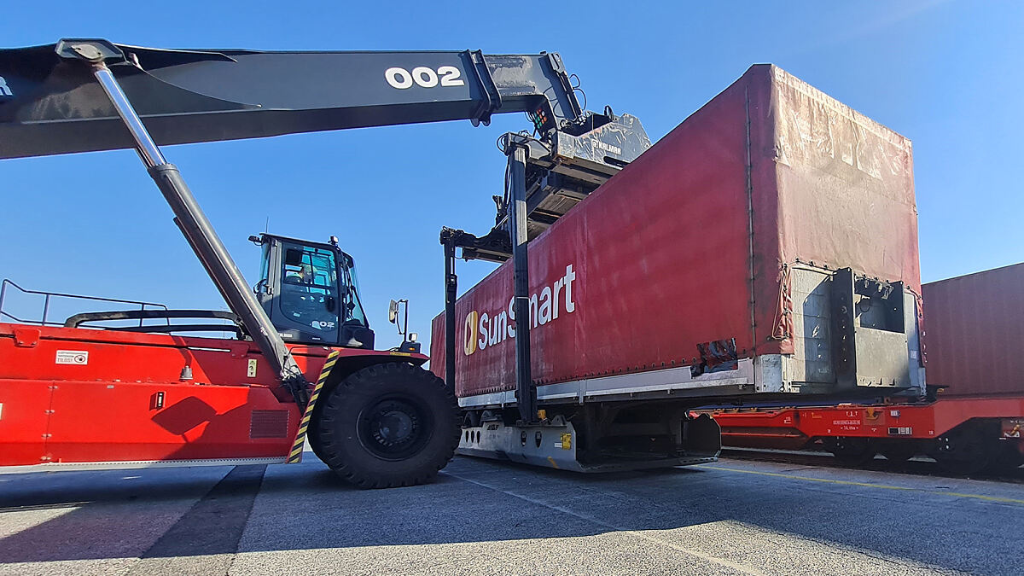First test cargo train from Ukraine arrived to Vienna
The new TransFER route was first presented at transport logistic in Munich, and now the first test train is preparing the ground for future transports: we are talking about the TransFER Vienna-Kyiv. The ÖBB Rail Cargo Group (RCG) is connecting Ukraine to its intermodal network (TransNET) in partnership with Ukrainian Railways (UZ). The test train travelled from Kyiv to the Rail Cargo Terminal BILK in Hungary at the end of September and successfully transported non-craneable semi-trailers carrying building materials by rail. This is a completely new concept, because until now it was only possible to transport the non-craneable semi-trailers on this route by truck, as is normally the case in the industry. This first for rail transport is therefore not only a blessing for the environment, but also eases the ongoing difficult situation with regard to the shortage of truck drivers in the Ukraine. One might say it is a win-win situation.
Non-craneable but still on the rails
This is made possible by r2L – roadrailLink – technology. The innovative handling and transport technology developed by the wagon hire company VTG in conjunction with its partner VEGA International makes it economically viable to load any type of non-craneable semi-trailer. This means that otherwise non-craneable trailers can be lifted with a crane and used in combined transport. The fully galvanised r2L solution is a platform that can be lifted vertically into and out of a pocket truck using either terminal cranes or reach stackers.
Keeping the economic wheels turning
The new connection between Kyiv and Vienna runs as required, with a stop in Budapest, and will offer the first regular, high-frequency intermodal connection between Ukraine and the numerous hubs in Central Europe. There are also other means of ensuring the flow of goods between Ukraine and the EU besides intermodal transport: the RCG continues to transport 150,000 tonnes of Ukrainian grain into the EU and in so doing makes a significant contribution to global supply security.
Original article HERE
Image source: oebb.at

